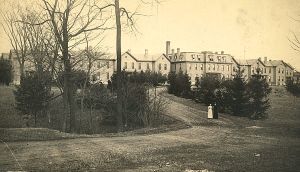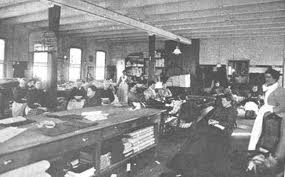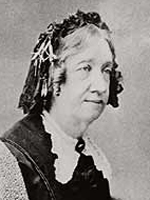Not all asylum patients resisted their incarceration. Some recognized that they were struggling with mental issues they could not control on their own, and did not resent the help that an asylum promised to provide. Like Catharine Beecher (see last post), Anna Agnew felt herself falling into a condition where she could not function. In 1876, Agnew remembers that she woke one morning “bathed in a cold, clammy perspiration (with an inexpressibly horrible sensation, as though falling–falling into some dreadful place of darkness!).” She couldn’t speak or move, and felt that a horrible, cold shadow had fallen upon her. She called her condition nervous prostration, and concluded that she was insane.
In her own words, she says that: “Unfortunately, for all concerned, I was not taken to the asylum for a period of several years.” Though this view seem incredible, Agnew explained that if she had been committed earlier or more quickly, she might not have had to eventually stay in an asylum for seven years. She felt that staying at home in her condition caused her to create misery for herself and those around her. Her family and friends treated her sometimes as a willful child, sometimes as a hypocrite, sometimes as a shirker, and sometimes as a woman “not wholly responsible.”
Once inside an asylum, Agnew saw many abuses which enraged her. Still, she appreciated her recovery and the privileges she enjoyed, such as access to the asylum’s medical libraries and the opportunity to earn a small sum through sewing.
______________________________________________________________________________________



